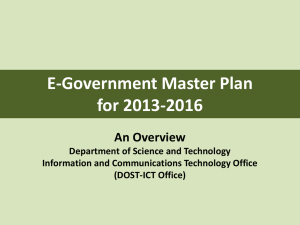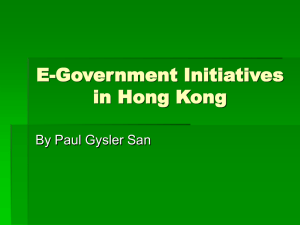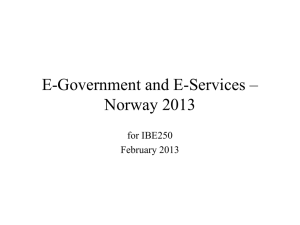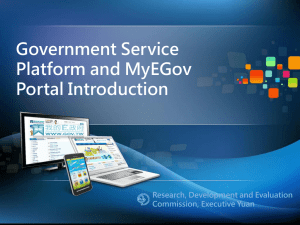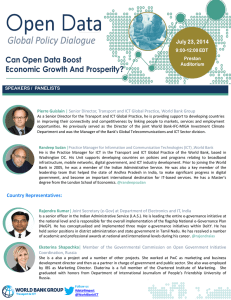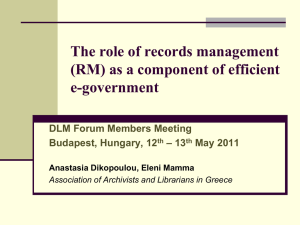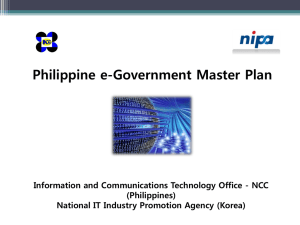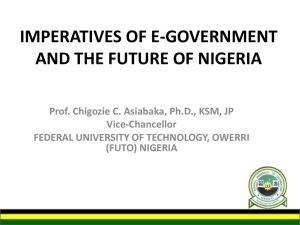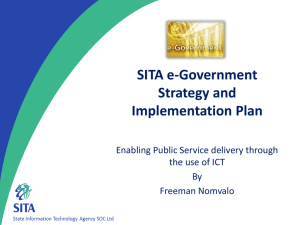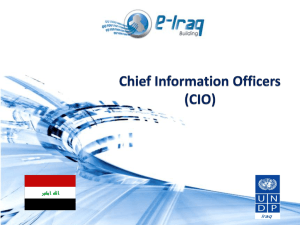e-government readiness - OIC
advertisement
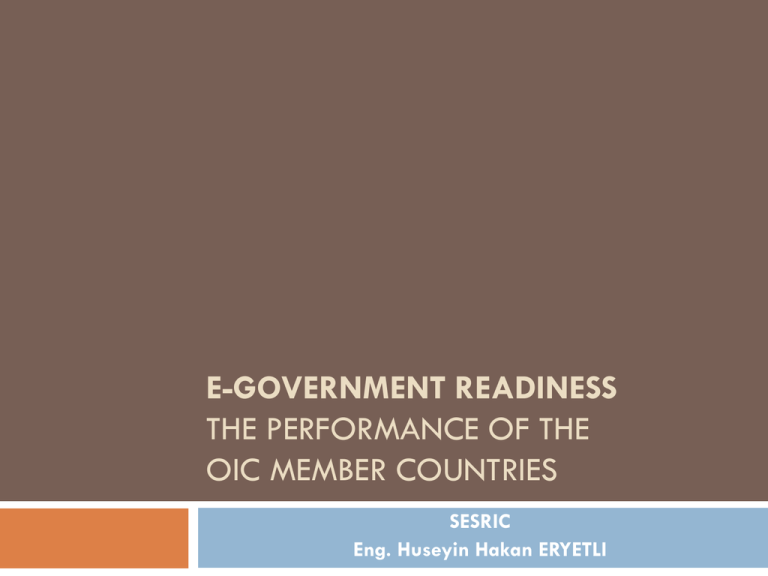
E-GOVERNMENT READINESS THE PERFORMANCE OF THE OIC MEMBER COUNTRIES SESRIC Eng. Huseyin Hakan ERYETLI Overview Introduction eGovernment Readiness eGovernment Indicators eGovernment Readiness Index (ERI) Web Measurement Index (WMI) Telecommunication Infrastructure Index (TII) Human Capital Index (HCI) Recommendations Introduction No uniform definition for e-government Different e-government definitions by various relevant international organisations In short, e-government is one aspect of digital government which includes the broad use of all information and communication technology (ICT) tools in delivering services of the public sector E-Government Readiness Measure of the quality of a country’s ICT infrastructure and the ability of its consumers, businesses and governments to use ICT to their benefit Three main data providers for benchmarking UN Public Administration Network (UNPAN) IBM Institute for Business Value in cooperation with the Economist Intelligence Unit (EIU), and Brookings Institution E-Government Readiness Index (ERI) A composite index comprising three sub-indices: Web Measurement Index (WMI) Telecommunication Infrastructure Index (TII), and Human Capital Index (HCI) E-Government Readiness Index (ERI) E-Government Readiness Index (ERI) Web Measurement Index (WMI) Ability and capacity of governments to deliver online services to their citizens by assessing the websites of ministries of health, education, welfare, labour and finance of the country by considering a five-stage model: Stage I – Emerging, Stage II – Enhanced, Stage III – Interactive, Stage IV – Transactional, Stage V – Connected Web Measurement Index (WMI) Web Measurement Index (WMI) Telecommunication Infrastructure Index (TII) A composite measure PCs Internet users Telephone lines Cellular subscribers and Broadband per 100 Relates them to a country’s infrastructure capacity as they relate to the delivery of e-government services Assigns each variable a 20% weight Telecommunication Infrastructure Index (TII) Telecommunication Infrastructure Index (TII) Human Capital Index (HCI) A composite of The adult literacy rate (2/3 weight given) and The combined primary, secondary and tertiary gross enrolment ratio (1/3 weight given) Shows to what extent the citizens of the OIC Member Countries are ready for e-transformation as a result of the OIC Member Countries’ investments in the education of their citizens to embrace the e-government transformation process Human Capital Index (HCI) Human Capital Index (HCI) Recommendations Three set of recommendations suggested for making e-government initiatives successful at the OIC level OIC Member Countries that lack human capital and technologic infrastructure and/or whose e-government programs are still in an early phase The second set of recommendations focus on the efforts for shaping an effective and sustainable e-government environment in the public sector of the OIC Member Countries that are relatively more experienced in e-government applications The third set of recommendations express the cooperation methods at the OIC level to enhance the capacity building of the Member Countries in e-government applications, and increase the productivity and quality of the e-government applications in the OIC Member Countries Recommendations (early phase) Human Capital Development (Education Increasing emphasizing ICT use) computer penetration rates Solving the energy (electricity) problem Encourage ICT infrastructure development (by subsidizing ISPs for example) Careful technology selection ePolicy and eStrategy Development Recommendations Have a strategic plan Take the requests of the stakeholders into consideration the ICT departments in each public institution should be consulted Provide a secure e-government experience Listen to citizens, businesses, civil servants etc. İt will contribute to developing user-friendly eGovernment applications Conducting careful analyses of the administrative process Make life-long learning an integral part of the sustainable e-government environment Formulate and implement an ICT strategy in line with the e-government strategy of the government (Effective and Sustainable eGovernment) affordable authentication technologies of electronic and/or mobile signatures Calculate Total Cost of Ownership (TCO) carefully for the technology (open source/proprietary) to be chosen Promote e-government services by offering incentives to citizens Recommendations (Cooperation at International Level) Establish a common platform to meet regularly for sharing e-goverment experiences Forming an OIC eGovernment Working Group Implementation of an eGovernment Web Portal: Form an electronic network to exchange information on egovernment strategies and initiatives Carry out a survey at the OIC level to bring out the training needs to foster overall capacity-building of the OIC Member Countries in their e-government initiatives THANK YOU E-GOVERNMENT READINESS THE PERFORMANCE OF THE OIC MEMBER COUNTRIES Eng. Huseyin Hakan ERYETLI Director of IT and Publications


